Building the Best Backyard Ice Rink: Conventional vs. Synthetic Ice
The best backyard skating rink is the one that fits your requirements. If you are looking for the most natural surface and enjoy building things from scratch, you may want to construct your own conventional ice rink in winter.
However, if you prefer using your rink all year round and would rather keep the installation simple, synthetic ice is a perfect choice.
Deciding which home skating set up is best for you takes a number of factors into consideration. By understanding each of these, and weighing up how important they are to you and your home rink goals, you’ll know which option suits you best and what you’re facing to make your backyard ice rink a reality.
DIY Ice Rinks: Considerations and Requirements
When it comes to Do It Yourself (DIY) ice rinks, there are pros and cons for each of the options available to the avid handy-person or passionate skating enthusiast. Each has their own requirements to take into account as well.
Naturally frozen, refrigerated and synthetic rinks differ in terms of glide experience, installation, maintenance, pricing, and other factors. Only after you’ve decided which one to go with will you be able to get started on building or installing the best backyard ice rink for your purposes.
From year-round hockey training to seasonal skating for fun, there’s an option for everyone.
The Feel: Why an Authentic Glide Matters
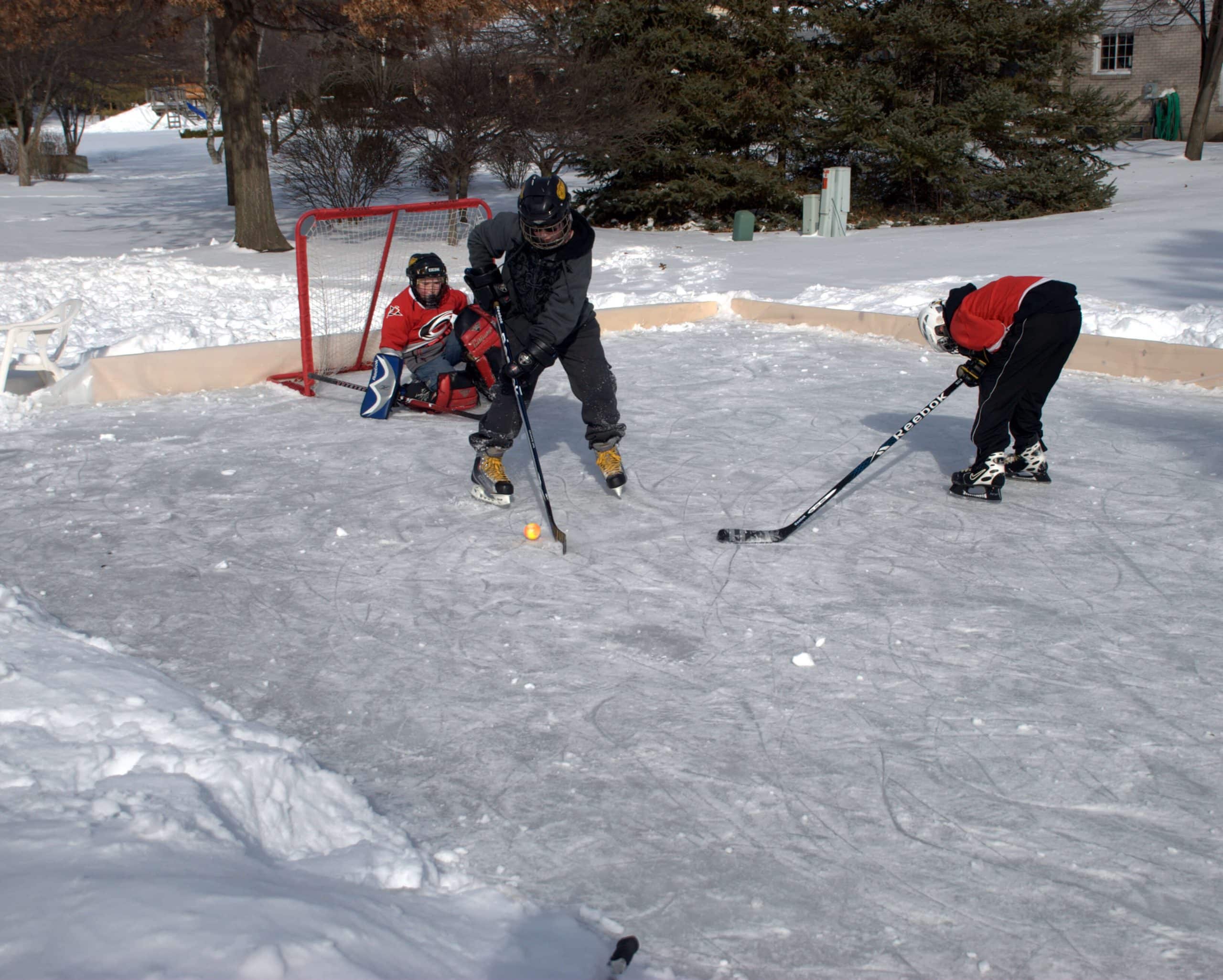
Do you have concerns over the skating experience on an artificial surface? Are you wondering what the differences between synthetic ice and real ice are?
If your conventional DIY ice rink is done right, or you opt for a refrigerated rink, nothing can beat the surface in terms of an authentic feel. After all, conventional ice is simply the original.
However, a premium quality synthetic ice surface can very closely mimic all the skating characteristics of conventional ice, which has made it a serious alternative to conventional ice—even for professional athletes.
Since an authentic feel is crucial to replicating all biometric movements realistically and without spoiling your technique, you should stick to either a self-made conventional ice backyard rink or opt for a high-quality synthetic product. Premium synthetic ice products offer an optimal ratio of glide and grip while keeping abrasion and shavings levels low (much lower than conventional ice).
If you are questioning whether you can use normal skates on synthetic ice, the answer is a resounding, “Yes!” Synthetic ice is not bad for your skates but, just like on conventional ice, you should sharpen them regularly for the best skating experience.
Discover our synthetic ice rink technology
Ice Time: How To Extend It Beyond Winter
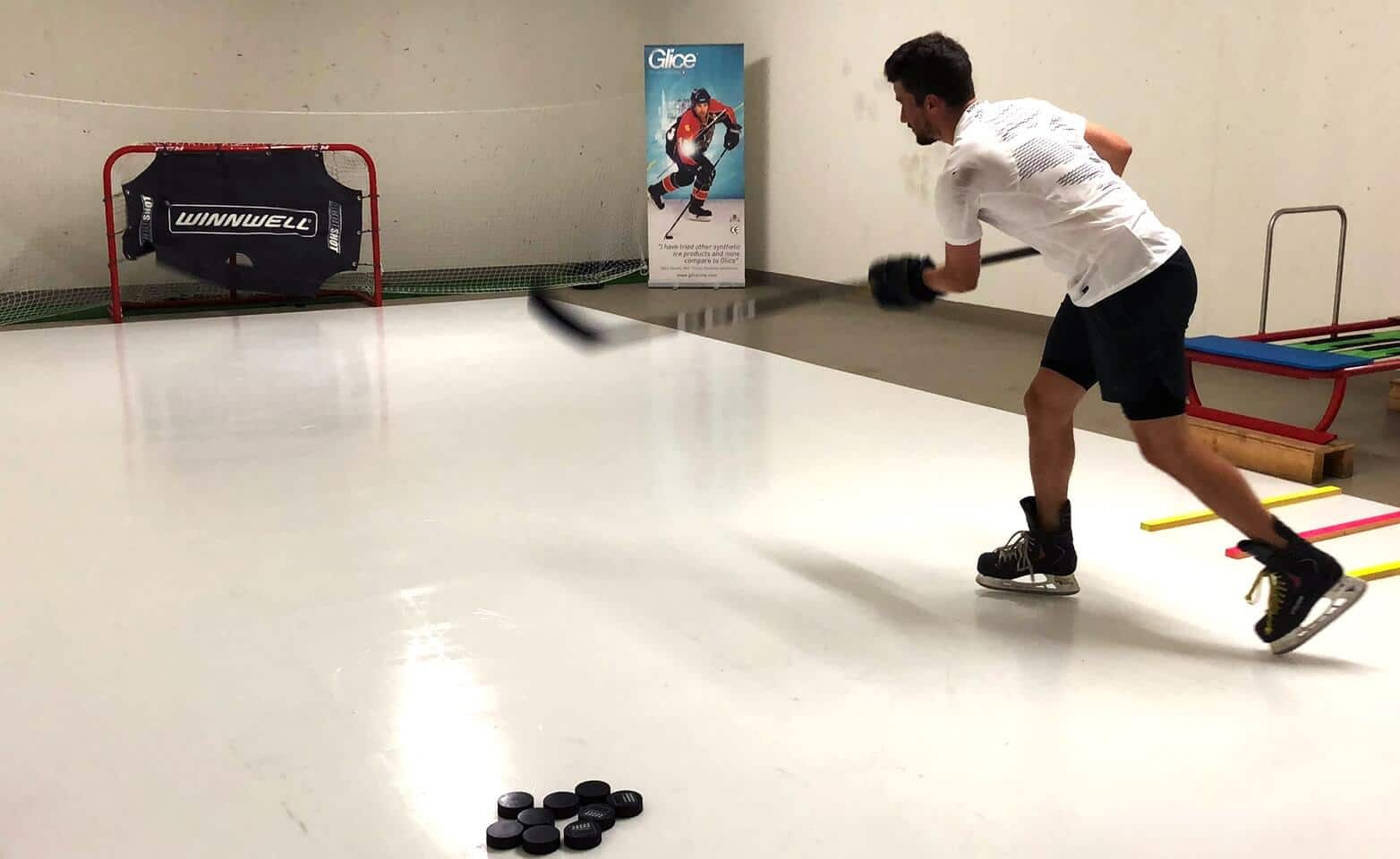
DIY traditional and refrigerated rinks are fun to skate on—if only they would last a little longer. Limited to colder regions and winter months, you are looking at a small window of opportunity to use your rink, and that window is getting smaller in times of climate change. We’ve all seen more and more public and private rinks disappear over the last couple of years, as winters are getting warmer.
So how can you maximize ice time throughout the year? This is where synthetic home rinks score big time! Completely independent of climate conditions, you can set them up anywhere and anytime for a year-round skating season. The enormous increase in ice time lets you get ahead of the competition and practice your skills on a whole new level.
Professional athletes like Nashville Predators captain and NHL All-Star Roman Josi use artificial ice pads to keep their training up during the summer months, which gives them an extra edge when the new season starts.
While the low quality of many cheap synthetic ice products couldn’t convince professionals to use them for the longest time, advances in technology have led to a wider acceptance of premium artificial ice among athletes in recent years.
Take a look at our athlete testimonials to see for yourself.
Installation: What You Need for Your Backyard Ice Rink

It can be a rewarding feeling to build your very own backyard ice rink from scratch—just make sure that you follow the right instructions, as things can get a little tricky. According to Canadian backyard rink builder Matt Humes, the main requirements are a decent amount of space, a lot of patience, and frosty temperatures of around -15° C (5° F).
What you need in terms of materials are boards, bracings, liner (tarp), and a lot of water. The tarp isn’t always an absolute necessity but it definitely helps when you build on grass instead of concrete. Customized boards (e.g. wood) are available from your local hardware store, or you can buy a ready-made ice rink kit. Alternatively, you can also make the boards from snow and ice, but that technique is more challenging and the puck doesn’t bounce off as well.
Think of the boards as a big sandbox or above-ground pool—after you set them up, you lay out the liner and then you wait to create your rink surface. According to Humes, you want to pick a time when the weather forecast shows double-digit minus degrees for a couple of consecutive days, but without snow (which can otherwise leave a crust). Once the conditions are right, you get your hose ready and keep the water running—it takes about 14 hours for a 12×12 m (40×40 ft) rink.
Refrigerated rinks are more of a package solution that you set up. Using a chiller (generator) to cool the ice, they allow for a longer season (working below 10° C or 50° F). However, these rinks are much more expensive (more on that later) and consume tremendous amounts of energy and water.
With synthetic backyard rinks, you are set your surface up, rather than build it from scratch. The plastic panels are delivered to your house and all you need to do is to snap them together. Be sure to buy panels that connect with a tongue and groove system, since it is seamless and more stable than the puzzle system.
The installation of a 12×12 m (40×40 ft) home rink can be done by two people in about one hour. Add professional dasher boards for ultimate authenticity or build your own boards like you would for a DIY rink. Contrary to a conventional rink, you can even use synthetic panels without any boards. If you don’t want to keep your rink set up all year round, it’s easily dismantled and stored.
Both types of rink work on any flat surface (e.g. grass, concrete, or stone). If the ground is not perfectly even (e.g. pebbles or gravel), use a tarp to smooth things out.
Maintenance: What It Takes To Keep Your Home Ice Skating Rink Running
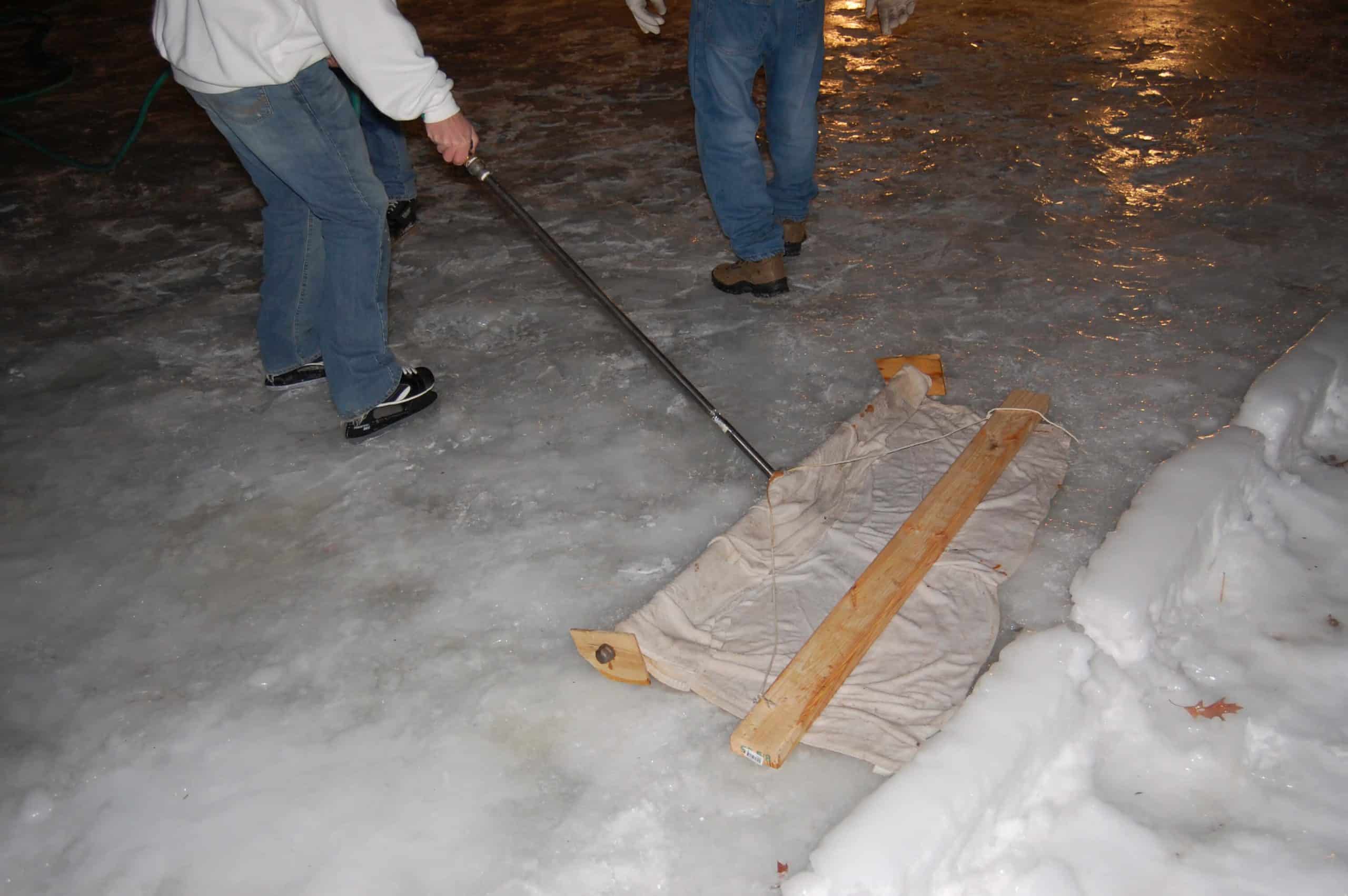
The right maintenance is key to keeping your rink running smoothly. Maintaining a DIY backyard ice rink requires regular resurfacing to keep the ice at the same thickness level. Ideally, you would recoat it with water after every session. To keep the surface smooth, you will need to shovel snow and scrape off frozen rain droplets. Refrigerated rinks need some extra attention on top of that, using proper ice resurfacing equipment.
If you opt for an artificial rink, maintenance is significantly easier and quicker. You can broom off snow and treat rain that has iced over with a pressure cleaner filled with hot water. During warmer months the maintenance of a synthetic backyard rink is minimal—just sweep it every once in a while and you’re good to go!
Order your synthetic ice tiles today!
Location and Space: Why Bigger Isn’t Always Better
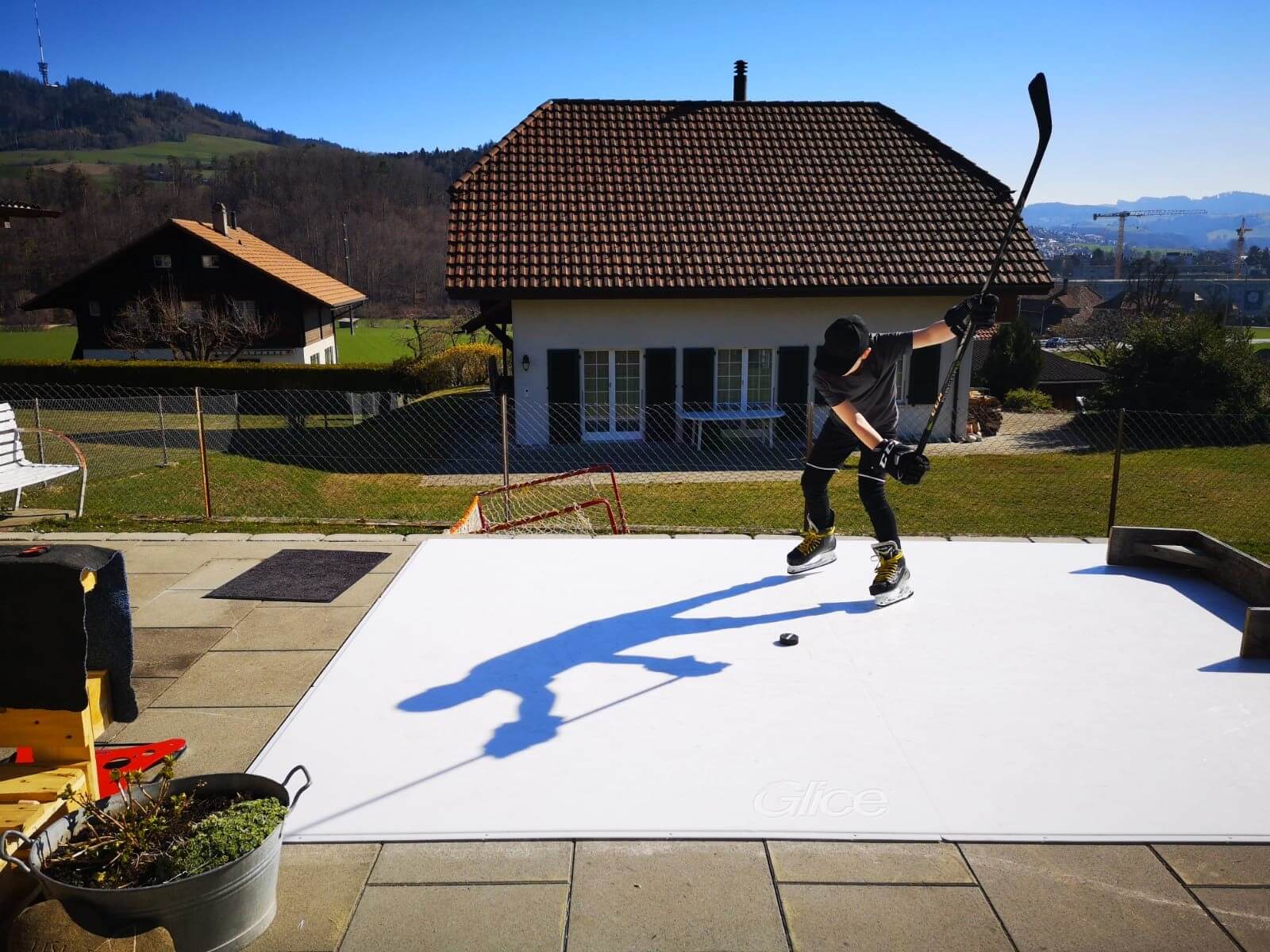
If you have a lot of space available for your project, great! If you don’t, DIY and refrigerated rinks might not be the perfect choice, due to the spatial requirements related to the construction. Synthetic ice rinks and smaller pads come in all sizes and shapes to suit your location perfectly. Since they are easily installed, dismantled, and stored, artificial rinks are more versatile and also cater to locations with more limited space. They can be set up in a smaller front yard and even indoors in a garage or basement.
Small synthetic rinks e.g. 4×3 m (12×9.5 ft), can be great to practice stickhandling and shooting, while medium sizes e.g. 6×3 m (19×16 ft) add enough space to train skating and passing as well. Larger rinks, like 6×6 m (19×19 ft) or 10×5 m (33×16 ft), are great for cone drills, goaltending, and 1:1 or 1:2 scenarios.
You can also get professional dasher boards and hockey goals to create your own mini-arena and practice hockey with your friends. Easily expandable at any time, it’s possible to increase the size of your rink year after year and choose if you want dasher boards around it or not.
Durability: What To Keep In Mind
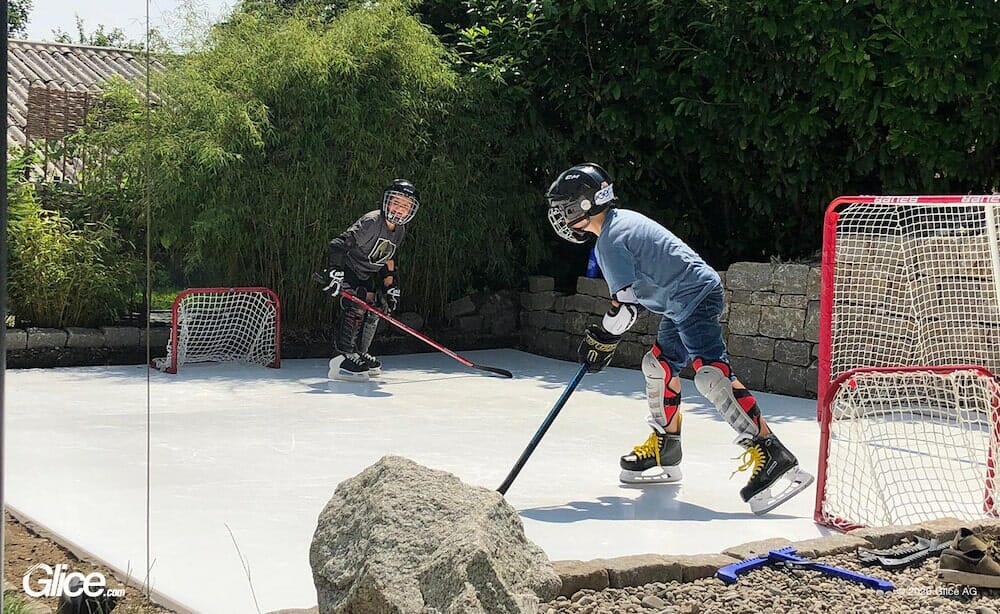
If you want to use the materials needed for your self-built ice rink for more than one season, make sure that you invest in quality. Plywood, for instance, might be cheap, but probably won’t last you for years to come. In terms of boards, brackets, and liner you get pretty much what you pay for, so choose your supplies according to how durable you need them to be.
If you don’t want to go back to the hardware store every year, a backyard ice rink kit with sturdy boards and good liners will cost you more but should last you longer. Due to their mechanical nature, refrigerated rinks are much more high-maintenance, which makes their life span a bit of a gamble.
How long does synthetic ice last? Similarly to a DIY rink, you get pretty much what you pay for, since the quality of artificial ice panels varies greatly. Premium products are more expensive, but their durability might be worth the extra investment as they’ll last you for decades.
In fact, the surface of high-quality, auto-lubricant products get better the more you skate on them. As you skate on these artificial ice panels, your blades heat up and cut open the surface molecules, which release their lubricant. So the more you skate, the better!
After a couple of years, you can also flip over the panels and have a completely fresh surface.
Price: How Much Does a DIY Ice Rink Cost?
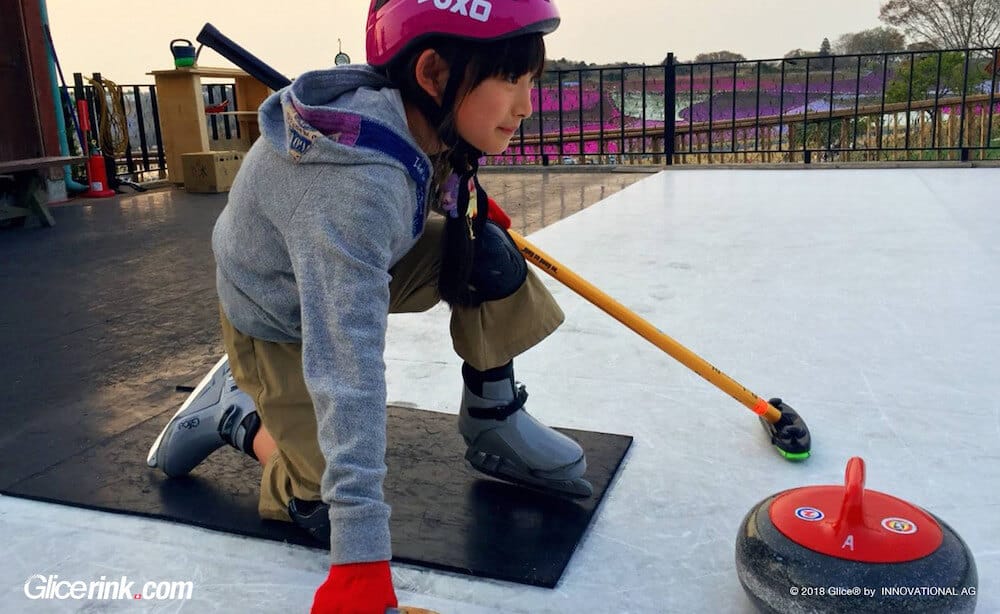
The price of your rink depends on the size and the materials you use to build it or set it up. If you do it yourself, the main costs for constructing a backyard rink are the building materials, such as the boards, bracings, and liner, plus the water for the initial surface as well as for resurfacing.
If you are on a very tight budget and/or a talented handyman, you can buy the supplies at your local hardware store and make the boards yourself—the aforementioned plywood is a cheap option here, but other woods might last you longer. More sophisticated and sturdier boards can be bought as part of backyard ice rink kits but will set you back at least a couple of hundred US dollars, depending on the size of your dream rink.
If you want to beat the weather with a refrigerated rink, you are looking at a whole different price dimension in terms of initial installation costs, maintenance, and operating costs (water and energy). Refrigerated rinks are by far the most expensive option among the three introduced here. Even just the recommended excavation can cost you up to $2,000 USD, while the rink itself will set you back around $25,000 USD (operating costs not included).
How much does a synthetic ice rink cost? Synthetic rinks are significantly cheaper than refrigerated systems, with premium quality products starting at under $2,000 USD. If you compare the initial purchase price for the raw materials of a DIY rink to the panels of a synthetic backyard rink of the same size, the DIY rink will be cheaper.
Smaller synthetic rinks, however, are quite affordable and similarly priced to larger DIY rinks, so you could consider the trade-off between a larger rink that only works in low temperatures or a smaller rink you can use in any climate and any location.
In the end, you might find the higher initial investment of an artificial ice rink worthwhile, considering that you can use it all year round and for many years to come.
Get a quote!
The Verdict: The Best Backyard Ice Skating Rink for You
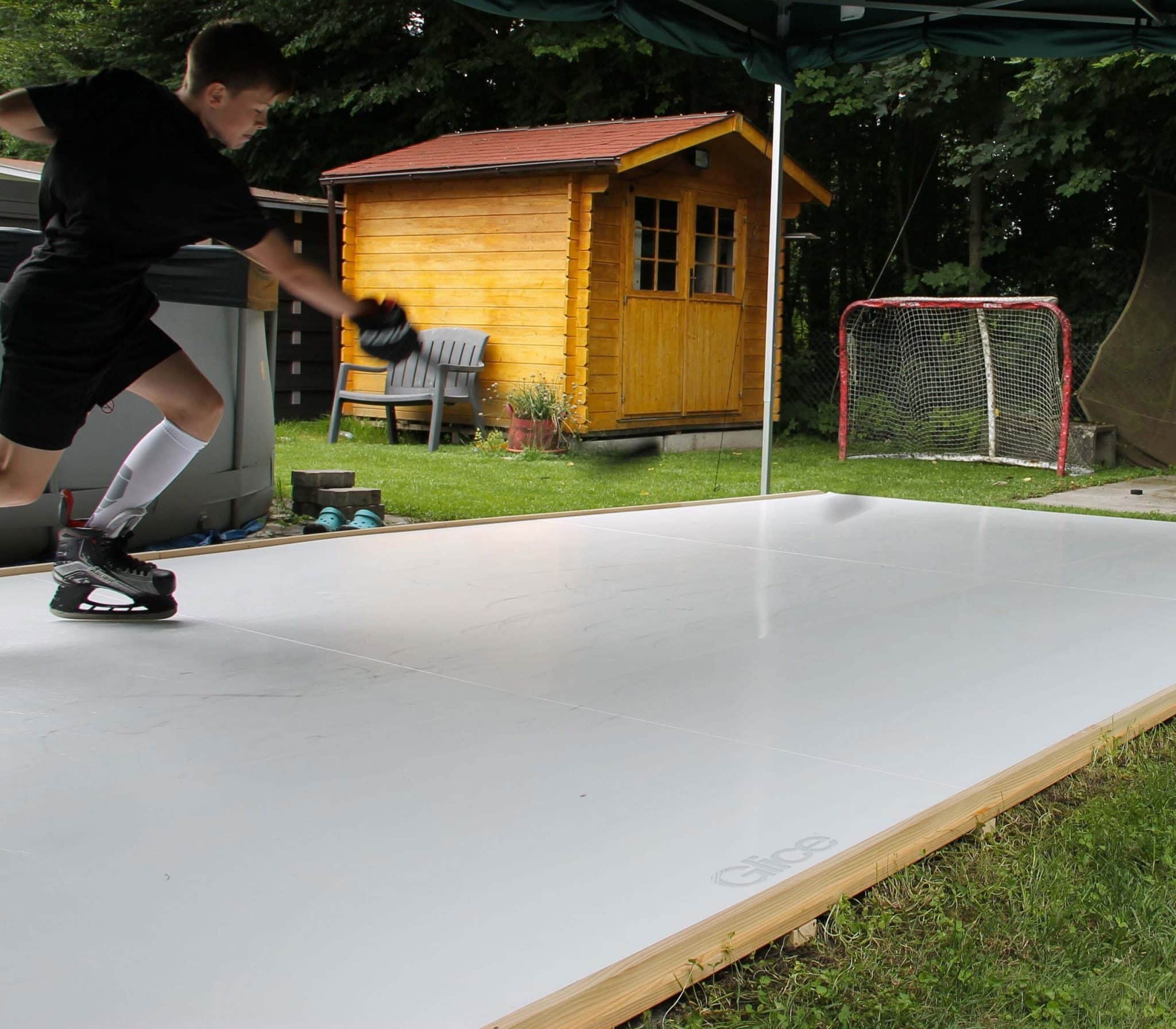
If you enjoy building things from scratch and want to go old school with your rink, you might want to opt for a classic winter season DIY rink. Your next steps are to stop by the hardware store, get supplies (keeping the trade-off between price and durability of materials in mind) and start building.
Then wait for the right weather conditions (freezing cold, but no snow) before you fill up your rink with water. If you are not much of a handyman, an ice rink kit can come in handy. It comes with all the necessary materials and instructions, so you just need to set it up.
A refrigerated rink can extend your winter season slightly and is fun to skate on, but you will need a very thick wallet!
If you want to use your rink all year round for increased ice time and that extra edge, synthetic ice panels are the way to go. They come as complete turnkey solutions and can be installed in no time without any expertise. Offering maximum versatility, you can set them up anywhere, even indoors, and maintenance requirements are minimal.
Be sure to opt for a high-quality product with a high glide factor, good glide and grip ratio, low abrasion, and minimal shavings—like Glice. This will allow you to replicate all biometric movements authentically, just as you would perform on conventional ice.
Developed by athletes for athletes, Glice synthetic ice is a Swiss premium quality product that offers the highest glide factor in the industry and is the preferred choice of pros like Roman Josi. Get in touch for more information and offers!


